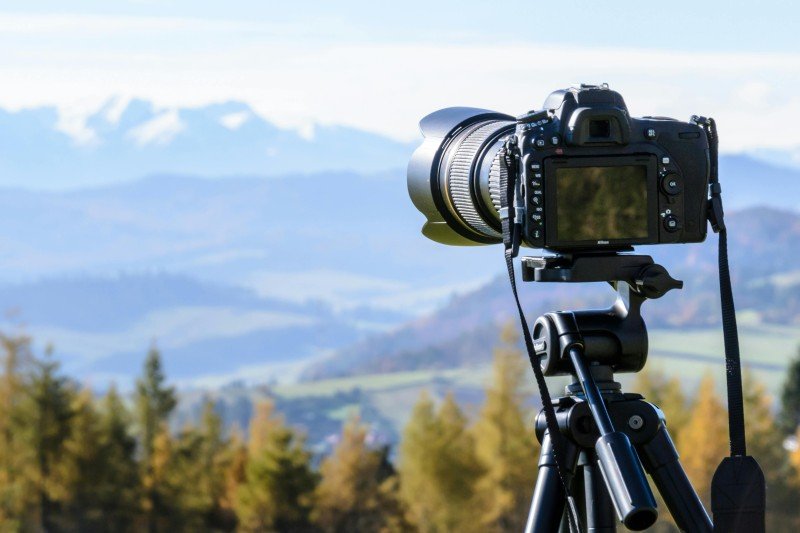In recent years, the use of cameras has transformed the way conservationists approach wildlife protection. These devices, often referred to as camera traps, are now a vital tool in monitoring animal populations and understanding their behaviors. By setting up cameras in strategic locations, researchers can capture images and videos of wildlife without disturbing their natural habitats. This non-intrusive method allows for a more accurate assessment of species diversity and population trends.
Camera traps have proven especially beneficial in tracking elusive and endangered species. For instance, in dense forests or remote areas, traditional surveying methods can be challenging. However, with camera traps, conservationists can gather critical data about animals like the snow leopard or the Bengal tiger, which are otherwise difficult to observe. These insights help shape conservation strategies tailored to the specific needs of these vulnerable species.
Moreover, the technology behind these cameras has advanced significantly. Modern camera traps are equipped with movement sensors and infrared capabilities, enabling them to capture high-quality images day and night. Some even have Wi-Fi connectivity, allowing conservationists to receive real-time data. This immediate access to information lets teams respond quickly to threats such as poaching or habitat destruction, enhancing their efforts to maintain the delicate balance of ecosystems.
In addition to monitoring wildlife, cameras also play a crucial role in community engagement. By sharing stunning images and videos with the public, conservation organizations can raise awareness about endangered species and the importance of protecting their habitats. These visual stories help foster a connection between people and wildlife, inspiring action and support for conservation initiatives around the world.
Innovative Technology in Nature Conservation
Innovative technology has played a crucial role in transforming nature conservation efforts, particularly through the use of cameras. Wildlife cameras, also known as trail cameras, are capturing stunning images of rare and elusive species, enabling conservationists to monitor animal behavior and populations in their natural habitats. These cameras are often equipped with motion sensors and infrared technology, allowing them to take pictures day and night without human intervention.
One of the most exciting advancements in wildlife conservation is the use of camera traps for research and monitoring. These cameras help scientists gather essential data on animal movements and activities, which can be vital for conservation planning. By studying the images over time, researchers can understand trends in wildlife populations, identify migration patterns, and even detect changes in habitat use.
In addition to data collection, smart camera technology is enabling real-time monitoring of wildlife. Some modern cameras are equipped with cellular connectivity, allowing rangers and researchers to receive instant notifications when animals are captured in frame. This immediate feedback helps them respond quickly to emerging threats, such as poaching or habitat destruction, ultimately improving their ability to protect vulnerable species.
Not only do these cameras aid in research, but they also engage the public in conservation efforts. Many organizations share their camera footage online, captivating audiences with glimpses into the lives of wildlife. This increased visibility fosters a greater appreciation for nature and encourages community involvement in conservation activities. With continuous advancements in technology, the potential for wildlife cameras to revolutionize conservation practices is more promising than ever.
Monitoring Wildlife with Smart Devices
In recent years, the integration of smart devices into wildlife conservation has sparked a revolution in monitoring nature. From trail cameras equipped with motion sensors to drones capturing aerial views, these technologies have become essential tools for researchers and conservationists. They provide insights into animal behavior and habitat usage, allowing for better protective measures for endangered species.
One of the main advantages of smart devices is their ability to capture high-quality images and videos without human interference. This allows wildlife to behave naturally, resulting in more accurate data collection. For example, researchers can track the movement of elusive species like snow leopards or monitor nesting habits of sea turtles, all while minimizing human impact on their natural environments.
Additionally, many smart devices now come with advanced features such as real-time data transmission and wildlife recognition software. This means that conservationists can receive immediate alerts when animals are spotted or when specific behaviors are observed. With these insights, strategies can be adapted quickly to address emerging threats, such as poaching or habitat destruction.
Moreover, the affordability and accessibility of smart devices have opened new avenues for community involvement in wildlife monitoring. Citizen scientists can now use their smartphones and accessible technology to contribute to conservation efforts. By participating in data collection, local communities not only help researchers but also become more connected to the wildlife in their areas, fostering a deeper appreciation for the natural world.
Capturing Moments for Conservation Success
In the world of wildlife conservation, capturing moments can mean the difference between success and failure. Today, advanced cameras are playing a crucial role in this effort. These innovative devices are not just tools for photography; they have become essential for monitoring wildlife and their habitats. Conservationists are using them to gather vital data, observe animal behaviors, and assess ecosystem health in ways that were once unimaginable.
One of the most significant advancements in this field is the use of remote cameras. These devices can be placed in various locations, allowing wildlife researchers to document the presence and activities of elusive species without disturbing their natural environment. With motion sensors and infrared technology, these cameras capture stunning images and videos day and night. This non-invasive method provides invaluable insights into animal populations and migration patterns.
Moreover, the images captured by these cameras serve as powerful storytelling tools. They help raise awareness about endangered species and the challenges they face. Through social media and documentaries, compelling visuals can engage the public, prompting action and support for conservation initiatives. A single striking image can evoke empathy, driving home the message that wildlife needs our protection.
In addition to providing data and awareness, these cameras can also aid in anti-poaching efforts. By strategically placing cameras in high-risk areas, conservationists can monitor illegal activities and gather evidence against poachers. This proactive approach not only protects wildlife but also helps to hold poachers accountable, fostering a sense of vigilance among local communities.


